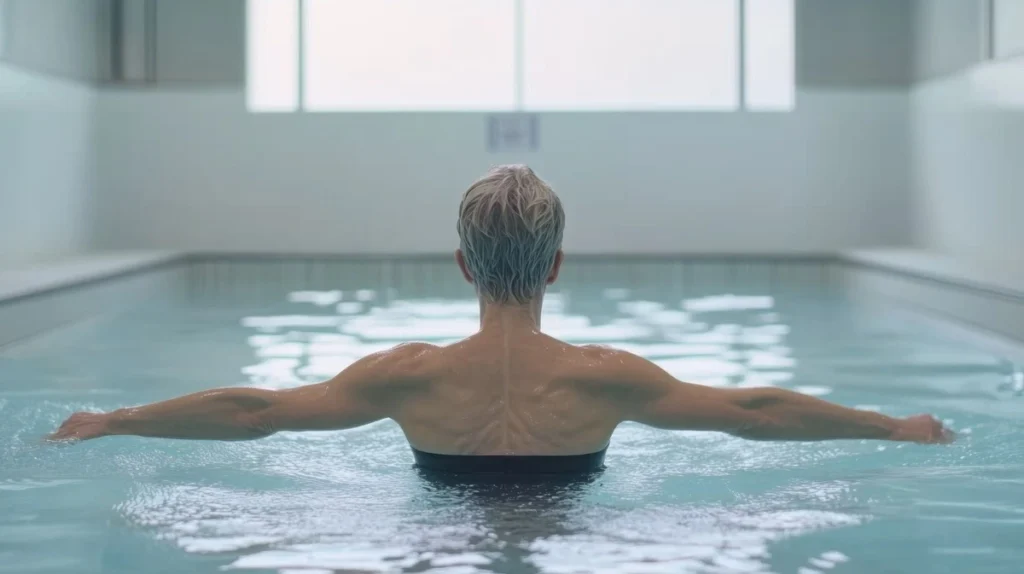
Introduction: Understanding Spinal Stenosis and the Role of Exercise
Spinal stenosis is a condition where the spaces within your spine become narrowed, putting pressure on the nerves and leading to symptoms such as pain, tingling, numbness, or weakness in your back, neck, arms, or legs. This condition can affect people of all ages, but it’s especially common as we grow older. Symptoms can range from mild discomfort to more severe mobility issues, impacting your independence and overall quality of life. Learning how to stop spinal stenosis from progressing can help you take proactive steps to manage these symptoms and maintain your quality of life.
One of the most powerful tools for managing spinal stenosis is movement. Engaging in safe, targeted exercise not only helps maintain flexibility and muscle strength but also improves circulation, supports spine health, and can even uplift your mood. While keeping active is essential, choosing the right type of physical activity is crucial — certain spinal stenosis exercises to avoid include high-impact or twisting movements that could worsen symptoms. Many patients worry that exercise could increase their pain, but with the proper guidance and modifications, exercise is not only safe but also highly beneficial.
Traditional exercise routines on land, like jogging or even brisk walking, can be daunting for those with spinal stenosis, often leading to increased discomfort or a reluctance to stay active. The stress and impact these activities place on joints and the spine can discourage even the most motivated patients. This challenge can be discouraging, but hope lies in other approaches that are gentler on the body.
This is why so many people with spinal stenosis ask, Where can I find water therapy for back pain near me? While the availability of water therapy will vary from community to community, it can be worth the search because water walking can be one of the most effective water therapy exercises. Water walking is a gentle, low-impact activity that takes advantage of water’s buoyancy, reducing the load on your spine and joints while still allowing you to build strength and endurance. It enables you to move freely with less pain, unlocking the benefits of exercise regardless of age or physical limitations. Many patients have discovered a renewed sense of freedom and hope through aquatic therapy, finding comfort in the water’s support and encouragement in their progress.
If you or a loved one is living with spinal stenosis, remember: You are not alone on this journey. Request an appointment today or ask your doctor about Goodman Campbell for personalized Spinal Stenosis treatment options, compassionate guidance, and the innovative therapies that can help you move forward with confidence and comfort.
Is Water Walking Good for Spinal Stenosis?
Water walking has gained attention as a gentle, supportive exercise for people with spinal stenosis. Research and clinical experience confirm that water walking is especially beneficial for spinal health, offering pain relief, increased movement, and confidence with each step. The buoyancy of water reduces gravitational force on the spine and joints, allowing you to move more freely, and many find that it is easier to stay active in water even when traditional land-based walking causes discomfort. If you are seeking an inspiring way to reclaim your mobility, adding water walking to your routine can be a life-changing first step. Always ask your doctor before you add any new exercise to your routine. Make an appointment at Goodman Campbell for an individualized approach to managing your condition.
What Is Water Walking?
People have a lot of questions when it comes to water walking, from “Where can I do water therapy for back pain near me?” to simply “What is water walking?” If your spine care team recommends water therapy, ask them about facilities in your community that offer guided sessions. Water walking involves walking across a pool or aquatic space, submerging your body partially as you move against the gentle resistance of the water. This exercise is safe for most ability levels and can be adjusted for beginners or advanced participants. Unlike swimming or more strenuous water sports, water walking is easy to adapt to and does not require you to put your face in the water or swim laps. It is often recommended for people with lumbar spinal stenosis because it encourages movement without jarring impacts.
How Does Water Walking Help Spinal Stenosis?
Water’s buoyancy reduces pressure on the spine and joints, creating an environment where you feel lighter and can move more easily. This decreases painful compression on nerves and allows for greater mobility and endurance during exercise sessions. Water’s natural resistance also helps strengthen muscles, enhance flexibility, and promote better balance, which can decrease fall risk and improve overall quality of life for those with spinal stenosis. For many, water walking is less intimidating and more approachable than traditional exercises because any pain is often significantly diminished in water.
Comparing Water Walking and Land-Based Walking
While walking on land remains a healthy activity for many, it can sometimes be too strenuous for those with sensitive backs or spinal stenosis pain. Land walking places full body weight and gravity’s force on spinal structures, potentially exacerbating symptoms. In contrast, water eliminates part of your weight through buoyancy, enabling longer, more pain-free exercise periods. For many patients and families, water walking is a bridge to enjoying regular movement again and rebuilding confidence lost to chronic pain.
Safety Tips for Starting Water Walking Routines
Before beginning any new exercise, especially if you have spinal stenosis, it is important to check with your physician or care team. Start your water walking in a supervised environment, such as a pool with a lifeguard or water therapy instructor present. Wear supportive water shoes to prevent slipping, and be cautious of wet surfaces when entering or exiting the pool. Begin with short, gentle sessions, gradually increasing duration and intensity as you feel comfortable, always listening to your body’s feedback.
Water therapy and exercise can be an uplifting, enjoyable journey toward spinal health. Ask your doctor about Goodman Campbell to discover if water walking is right for you and start moving confidently again.
What Is the Single Best Exercise for Spinal Stenosis?
The single best exercise for spinal stenosis is usually a low-impact activity that promotes flexibility, strength, and gentle movement without putting additional strain on the spine. While each patient’s needs are unique, spine experts often recommend water walking and other aquatic exercises as the top choices for those seeking pain relief and mobility improvement. The buoyancy of water supports the body, reduces pressure on affected nerves, and allows for safe movement — a significant benefit for those who experience discomfort with traditional, land-based workouts.
What Other Exercises Are Recommended for Spinal Stenosis?
In addition to water walking, a variety of exercises may benefit individuals living with spinal stenosis. These include aquatic aerobics, gentle swimming, stationary cycling, and stretching routines that target the lower back and core. In many cases, water exercises after spinal fusion can provide a safe path to regain mobility without jeopardizing the healing process. By working with your healthcare team, you can build a routine that supports your recovery and overall well-being.
Water Walking Versus Other Low-Impact Activities
Water walking stands out among low-impact exercises because it combines the resistance of water with its natural buoyancy. This combination allows for both cardiovascular and strength benefits without undue pressure on the spine. Unlike traditional walking or jogging, which can exacerbate symptoms in some patients, exercising in water is easier on the joints and can make movement enjoyable again. While activities like yoga and cycling have their place, water-based workouts provide unique advantages for those with back conditions.
What Exercises Should You Avoid With Spinal Stenosis?
Not all exercises are suitable for people with spinal stenosis. High-impact activities, such as running, heavy weightlifting, and deep bending or twisting routines, can worsen symptoms and potentially cause injury. It’s best to avoid exercises that strain the lower back, involve rapid movements, or require heavy lifting. Always listen to your body, and consult your physician or physical therapist, especially when considering new workouts.
The Importance of Individualized Exercise Programs
Because every individual’s spine health is unique, there is no one-size-fits-all solution for spinal stenosis. A tailored exercise program that considers your current health, mobility, and any surgeries (e.g., spinal fusion) helps ensure the safest and most effective treatment plan. The right program empowers you to participate in activities you enjoy while safeguarding your long-term health and comfort. Ask your doctor about Goodman Campbell for tailored exercise recommendations. Personalized care is just a conversation away, and your journey to relief can start today.
How Can I Improve My Spinal Stenosis by Walking?
Improving your walking ability with spinal stenosis can feel challenging, but with the right strategies, it is absolutely possible to boost your endurance, comfort, and strength. The key is to focus on gradual progression, prioritize gentle yet effective movements, and leverage water exercises for lumbar spinal stenosis to support your journey. Water walking is a popular approach because it uses the natural support and resistance of water to ease discomfort and help you regain confidence in your mobility. If you want to learn how to tackle weight management and even how to lose belly fat with spinal stenosis, water-based activities may be a great part of your routine.
Tips for Improving Walking Endurance With Spinal Stenosis
People with spinal stenosis are typically advised to start with short sessions and slowly increase their time and distance. Consistency is vital. Individuals often try to walk in water 2–3 times a week to start. The buoyancy of water allows them to move with less pain and fatigue, meaning they can focus on building stamina instead of worrying about joint or nerve pressure. Over time, they may find that they can walk longer distances, and this achievement can bring a wonderful sense of progress and hope.
How Water Walking Specifically Helps Improve Flexibility, Strength, and Balance
One of the inspirational benefits of water exercises for lumbar spinal stenosis is the full-body support water provides. The natural resistance helps gently strengthen core and leg muscles, which play a crucial role in walking stability. Flexibility is enhanced by the warm embrace of the water, which eases stiffness and allows a greater range of motion. Over time, these improvements can lead to better posture, less pain, and more confident steps both in and out of the pool.
Incorporating Interval Training and Gradual Progressions in the Pool
When advised by your spine care team, you can step up your routine by introducing gentle interval training. Alternate between periods of faster and slower walking, but always listen to your body. Begin with light activity and gradually add intensity, such as walking a few laps, then trying exercises like gentle knee lifts or side steps. This variability helps challenge your body in new ways, spurring improvements in endurance and functional mobility while allowing for ample rest as needed.
Monitoring Symptoms and Knowing When to Stop
A patient’s well-being is the most important consideration. Anyone doing water therapy should keep track of how they feel during and after water walking sessions. If they notice any increased pain, numbness, or dizziness, they should pause and consult a professional. Remember, the goal is steady, sustainable progress. Celebrate every milestone, no matter how small, and let the water be a source of encouragement and support on the healing journey.
Ask your doctor about Goodman Campbell to develop a customized exercise routine to help manage your spinal stenosis. A brighter, more mobile future is possible.
Additional Water Exercises for Lumbar Spinal Stenosis Relief
Exploring water exercises for lumbar spinal stenosis opens the door to many gentle and effective ways to relieve pain, improve mobility, and enhance your quality of life. Beyond water walking, there are several aquatic activities that can strengthen your spine, improve flexibility, and help manage your symptoms. Embracing a variety of these exercises can create a holistic approach to spine health.
What Other Helpful Water Exercises Can I Do for Spinal Stenosis?
Besides water walking, consider gentle swimming, flutter kicks, sideways walking, and aquatic core exercises as part of your pool routine. For instance, gentle swimming — especially using strokes like backstroke or sidestroke — minimizes twisting and can provide an excellent cardiovascular and full-body workout. Flutter kicks, performed while holding the pool edge or with a kickboard, help engage the core and leg muscles without straining your spine. Sideways walking and gentle knee lifts in the water also build strength and stability while decreasing joint stress.
Is Swimming Safe and Effective for Those With Lumbar Spinal Stenosis?
Yes, swimming is good for spinal stenosis when performed at a comfortable pace and with attention to proper technique. The buoyancy of water supports your body weight, allowing for easy, low-impact movement that encourages flexibility and relieves discomfort. Swimming can also enhance circulation, reduce stiffness, and promote mental well-being. If you are uncertain about which stroke to use, start with backstroke or buoyant-supported walking before progressing further, and always listen to your body.
Are Water Exercises Suitable After Spinal Fusion?
Many people wonder about water exercises after spinal fusion. With your physician’s guidance, water workouts can be a safe and rewarding way to keep moving post-surgery. The reduced gravity in water offers gentle resistance and support, fostering mobility and strength without excessive spinal loading. However, it is essential to wait until your surgeon clears you for aquatic exercise — often several weeks or months after surgery. Begin with basic movements and progress only under professional supervision.
How Does Water Exercise Contribute to Weight Loss and Belly Fat Management in Spinal Stenosis?
Engaging in regular water exercise can be a highly effective way to lose belly fat and manage weight with spinal stenosis. The water’s resistance provides a gentle yet continuous workout for the core and all major muscle groups. Additionally, aquatic cardiovascular activity boosts metabolism and calorie burn, contributing to healthy weight management. Maintaining a lower body weight can ease pressure on the spine, improving mobility and reducing discomfort.
What Cautions Should Be Considered When Performing Water Exercises Post-Surgery or With Severe Symptoms?
While water exercises offer many benefits, it’s vital to tailor your routine to your current health and recovery stage. Post-surgery patients or those experiencing severe symptoms should always consult their doctor before starting or changing exercise routines. Watch for pain, numbness, or fatigue while in the water. Start slowly, avoid high-impact or twisting motions, and work with a physical therapist or aquatic specialist if possible. Your safety and comfort always come first.
Ask your doctor about Goodman Campbell to find local water therapy options that are right for your unique journey toward healing and relief.
Conclusion: Take the Next Step Toward Spinal Stenosis Relief
As you reflect on your journey to better spinal health, remember that the path to relief from spinal stenosis is often paved with small steps, taken one day at a time. Engaging in water walking and other water-based exercises can provide gentle yet effective support for your back and joints, offering a valuable tool in your pain management and mobility improvement strategy. The buoyancy and resistance of water empower you to move comfortably and build confidence, all while protecting your spine from unnecessary stress.
Adding water therapy to your care plan can transform your outlook, inspiring hope with each stride in the pool or gentle stretch in the water. Alongside medical guidance, these activities can foster a renewed sense of independence and vitality. While pain relief medications may play a role in some treatment plans, it is essential to focus on holistic solutions and open conversations with your care team to discover what works best for your unique needs and lifestyle.
Where Can I Find Water Therapy for Back Pain Near Me?
If your spine specialist has recommended water therapy, you can search online for water therapy for back pain near me to begin to explore your local options. Many health centers, community pools, and rehabilitation clinics offer group or individualized aquatic programs designed specifically for spinal conditions. If you are unsure where to begin, your doctor or a spinal specialist can help you locate reputable options in your community tailored to your level of mobility and health requirements. Remember that you are not alone on this journey. Qualified professionals are ready to walk alongside you every step of the way.
Let today be the day you take that courageous next step. Begin to reclaim your comfort, mobility, and peace of mind by reaching out for support. The dedicated team at Goodman Campbell is passionate about guiding patients toward relief, resilience, and renewal. Request an appointment today or ask your doctor about Goodman Campbell for compassionate, expert spinal stenosis care, and let us help you embark on an effective path forward.


